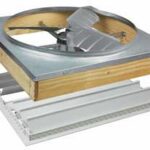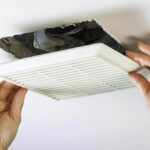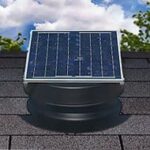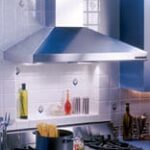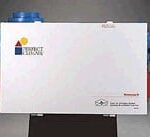Expert, unbiased advice on how to buy a whole-house fan, including options, sizing, when and how to use them, and manufacturers.
Are you tired of paying soaring electrical bills and running your air conditioner day and night in summer? Have you developed allergies, likely brought on by stale, non-ventilated, “shut-in” air? If so, you might consider installing a whole-house fan. This can provide much needed ventilation and cool your home using far less energy than that consumed by an air conditioner.
Whole House Fan Benefits & Drawbacks
According to the U.S. Department of Energy, whole house fans are a simple and inexpensive method of cooling a house. They provide excellent ventilation, lower indoor temperatures, and improve evaporative cooling. The cost for a whole house fan is $150 to $350 versus the cost for central air conditioning, which runs $2,000 to $4,000 or more. In addition, whole house fans use one-quarter the power of central air conditioning.
There are also some drawbacks to whole house fans:
• They can only cool the inside of the house to the outside temperature, so if it is hot outside, it will be just as hot inside, except for the coolness offered by air movement.
• Unlike an air conditioner, a whole house fan cannot dehumidify the air. If you want to dehumidify, see Dehumidifiers Buying Guide.
• A whole house fan can draw dust and pollen into the house. To solve air quality problems, see Home Air Purifier & Cleaner Buying Guide.
• In winter months, whole house fans could present energy loss as heated room air leaks into the attic. A shutter or cover can minimize this problem. To solve this issue, you can buy an insulated whole house fan. These kinds of fans have insulated doors that shut tight when the fan is not in operation.
• A whole-house fan adds noise to your living environment. A fan, especially located near bedrooms, can detract from the quality of your life (and sleep). See 8 Soundproofing Secrets for a Quieter Home.
How a Whole House Fan Works
The word “ventilation” comes from the Latin word for “to fan.” In the case of houses, this means out with the hot air and in with the cool. The attic is the target location for a whole house fan because hot air rises, and, especially during summer, attic temperatures can reach 130 degrees F when heat gets trapped in the attic. This causes the interior of the house to heat up. (For more, see How Ventilation Works.)
A whole house fan goes in the ceiling between a home’s uppermost rooms and the attic. It pulls cool outdoor air inside through open windows and doors and circulates it throughout the house. The fan draws warmer air in the house up into the attic where increased pressure pushes the hot air outside through roof vents. An attic fan expels the hot attic air far more effectively than passive attic vents working on their own.
Whole house fans cool the entire house using outside air instead of “conditioning” inside air. The truly “cool” part about them is that they keep air moving through a home, and moving air feels cooler than still air.
Whole House Fans vs. Attic Fans
What is the difference between a whole house fan and an attic fan?
Whole House Fans
Whole house fans suck out hot air from the house, force it into the attic, and then exchange it with cooler outside air via vents. Attic fans only serve to remove some hot air from the attic. Attic fans can, however, save you 30% on cooling costs by getting rid of trapped super-hot air that collects in the attic and then backs up into the house’s living spaces.
Attic Fans
Attic fans can lower upstairs temperatures by 10 degrees F., lengthen roof life by keeping shingles cooler, and, with an added optional humidistat, keep attics dry during winter months
Use of an attic fan is easy because it goes on or off automatically via a thermostat. The attic fan only runs when it is beneficial.
Look for these three things in an attic fan:
1) All metal construction—do not buy a fan made of plastic.
2) A quality thermostat because you do not want to have to crawl into your attic to manually turn the fan on and off.
3) A firestat, which shuts the attic fan off under extremely high temperatures, such as if your home is on fire. You can buy a firestat online.
Attic fans come in rooftop and gable-end models and can be powered by electricity or by solar energy.
For more about attic fans, see Attic Fans & Ventilation Tips.
Whole House Fan Evaluation
If you’re considering a whole house fan to complement your air conditioner, or to take the place of your AC, you first must evaluate your needs. The following guidelines will help:
Go into your attic to see what you have to work with. A sign of poor ventilation is an unbearably hot attic in summer. Check for moisture, evident from any mold, mildew, rusted nail heads, damp or compressed insulation, or wood rot.
Do not underestimate your ventilation needs. According to most building codes, you need 1 square foot of vent area for each 150 square feet of attic floor space.
Attic Vents
Also look for vents. There are gable vents, roof louvers, intake vents, and soffit and eave vents. Note the size and location of each. Finally, estimate the attic’s square footage. Do not underestimate your ventilation needs. According to most building codes, you need 1 square foot of vent area for each 150 square feet of attic floor space. Building codes specify minimums; you may want to increase those to ensure proper ventilation.
Make sure to have a balance of intake and exhaust avenues to properly ventilate your home. In the attic, remember that the the amount of intake limits the flow of air. With a balanced ventilation system, exhaust vents in the upper portion of your attic provide half of it, while intake vents provide the other half.
Rebates & Credits
Call your utility company. Many offer rebates for whole house fan installation. Also explore whether any state or federal tax credits exist.
Many companies offer 10-year warranties. Absolutely check out the warranty before making a purchase.
Old whole house fans tended to be noisy, consume considerable energy, require frequent maintenance (belt-driven ones need the belts changed periodically), and are not well insulated. Better engineered new whole house fans take care of these problems in multiple ways.
Whole House Fan Options to Consider
Look for:
• A quiet fan. Because whole-house fans are running most of the time, it’s important for them to be quiet. Fans are rated by “sones.” According to the American Society of Heating, Refrigerating and Air-Conditioning Engineers (ASHRAE), whole-house fans should not be louder than 1.0 sones.
Belt-drive whole house fans that use an integrated pulley provide for a smoother and quieter operation than direct-drive fans.
Generally speaking, the more blades a fan has, the quieter it will be. Also make sure your unit has a welded frame so it will not loosen up and begin to squeak. Have the fan isolated from your home’s framing with foam strips or rubber mountings. That way the motor hum will not resound through the framing and drywall.
• Quality shutters. The better the quality of the shutters or doors, the less thumping noises will occur when the unit shuts off. As mentioned above, energy-saving fans have self-sealing insulated shutters that close when the fan is not operating, which prevent heat from escaping when the unit is not in use.
• A timer control. A whole-house fan timer control is recommended over a thermostat, because a thermostat can turn the fan on when no one is home (i.e., no windows or doors are open). In addition, a fire in the fireplace could trigger the fan to go on if it’s controlled by a thermostat.
• Size. Ideally, look for a large fan that will run well at a lower speed, thereby using less energy. A heavy unit may also be quieter than a lightweight model because it rests on foam weatherstripping, held down only by its own weight. See more about size below.
• Installation method. Most whole house fans are relatively easy to install. Direct-drive models are the most do-it-yourself friendly because, for most, no attic joists need to be cut. Belt-drive whole house fans that use an integrated pulley system take longer to install, but a belt-drive unit provides for a smoother and quieter operation.
Sizing a Whole House Fan
When selecting a whole house ventilation fan system, an important factor to consider is what size it should be. Whole house fans are rated according to the cubic feet per minute (CFM) of air they can move. So, the bigger your house, the bigger the fan it will need to move the air effectively.
If your home has standard 8-foot-high ceilings, just multiply the home’s overall square footage by 3 to calculate the right size of fan for the house in CFMs. For example, if your home is 2,000 square feet, figure 2,000 x 3 = 6,000 CFM. If some of your ceilings are higher than 8 feet, buy a slightly larger one.
For a 2,300-square-foot house, the recommended size of a belt-drive unit is 36 inches (which will cover 6,900 CFM). Both belt-drive and direct-drive units for a 1,900-square-foot house require a 30-inch unit that can handle 5,700 CFM. For a 1,500-square-foot house, the direct-drive 24-inch unit, which covers 4,500 CFM, is recommended.
If you choose a high-speed fan, you need to make sure there’s enough attic venting to expel its output. A good rule of thumb is 1 square foot of venting area for every 750 CFM of fan. Or you can simply provide the same amount of attic venting as the size of the shutter hole in the ceiling.
When & How to Use a Whole House Fan
For optimal effectiveness, use your whole house fan in the late afternoons, evenings, and/or early mornings when the outside temperatures are cooler than inside temperatures.
Here are a few basic tips for using a whole-house fan:
• Turn off the central air conditioning when using a whole house fan. Otherwise, you will expel all of that expensively cooled air in your home!
• Open the windows and doors. The fan needs inbound fresh air. If you do not open windows and doors, the fan may cause your gas-burning appliances, furnace, or water heater to backdraft exhaust fumes and carbon monoxide into your home.
• Do not have a fire going in the fireplace. A fire will not vent properly because of the change of air pressure that a whole house fan causes.
Whole House Fan Manufacturers
Here is a closer look at a few popular choices:
The QuietCool System is a multifan, multilocation system that moves 1,500 CFM of air per fan through a ducted system, much like a forced-air heating and AC system. It is easy to install and has insulated self-closing damper doors to prevent unwanted air loss.
QuietCool fans are installed in a hanging position from the attic rafters, which puts the fans as far away from your living space as possible to reduce noise.
They can have multiple on/off switches if you want one fan to run in one part of the house but not in another part. The QuietCool has no motorized doors or belts to replace, and the fan blades are not plastic. It comes with a 10-year warranty.
The Tamarack Technologies HV1600 whole house fan requires no maintenance and has an R-50 insulated doors, which, when not in use, form an airtight seal between your attic and living space.
The “Ghost” is a two-speed whole house fan with a remote on/off switch. This is an easily installed and energy-efficient large-diameter fan that closes and seals when not in use. It comes with a three-year warranty.
The “Superfan” is an energy-efficient whole house fan that does not require any maintenance. It has one central unit with a German-made fan motor known as a backward curved impeller motor, designed to pull large amounts of air through the air ducts quietly.
It also has an on/off switch and a wireless remote control option. The Superfan is rated for all homes up to 3,000 square feet, though it is not recommended for homes in very cold climates. The cost is $1,550, with installation estimated at between $400 and $500.
TheCentric Air is a ducted, two-speed whole-house fan. Its collection plenum and grille fits between 16-inch or 24-inch on-center ceiling joists and the fan motor is located at the far end of the duct, keeping the motor noise away from the living quarters. This makes this type of fan a good choice over bedrooms or other living spaces where quiet is important.
Find a Pre-Screened Local Whole-House Fan Installation Contractor



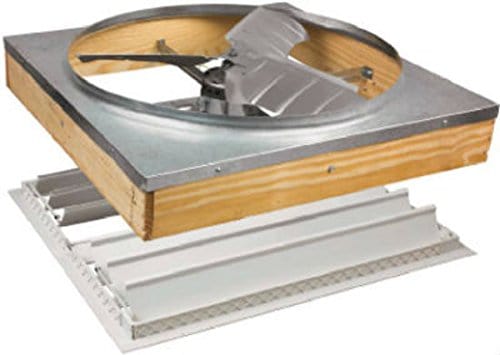
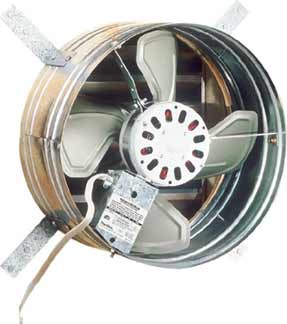
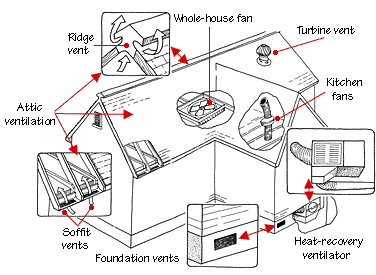
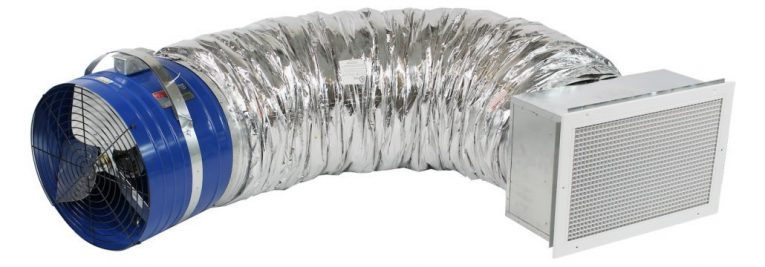
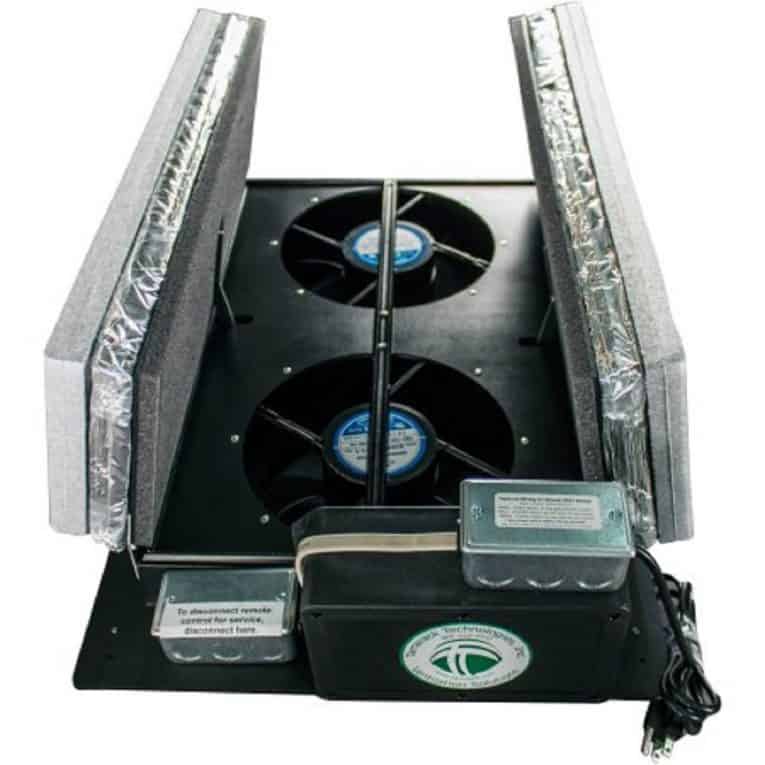
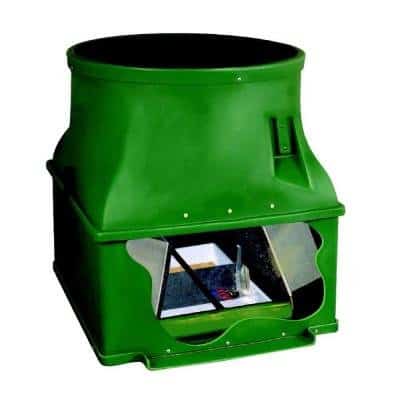
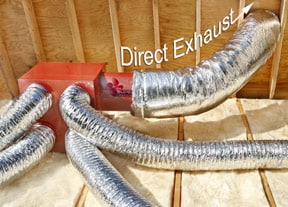
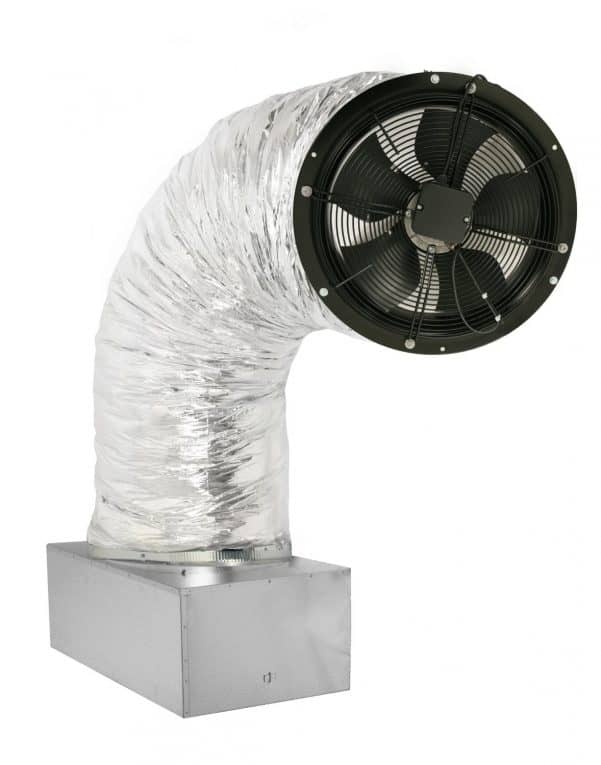
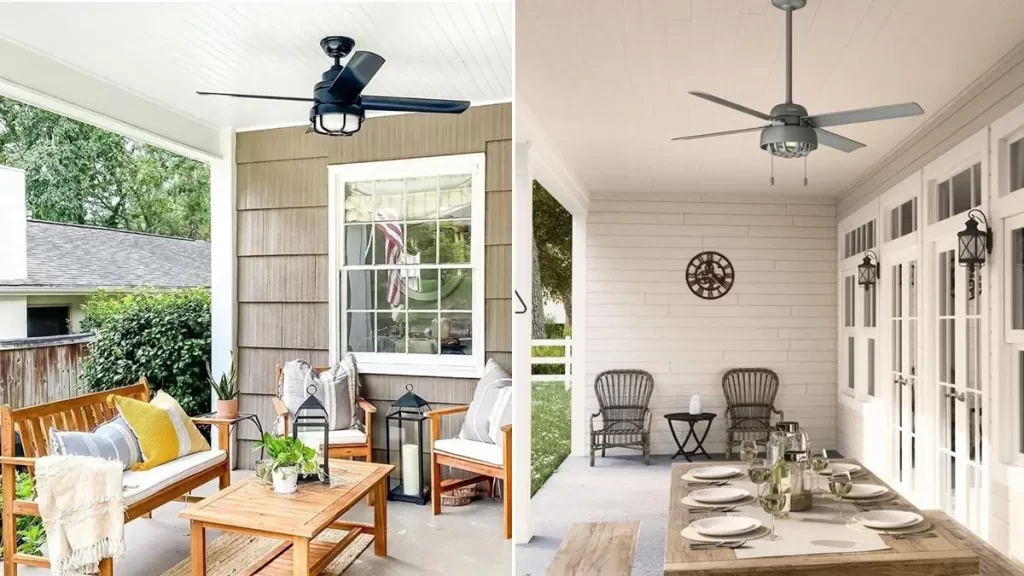
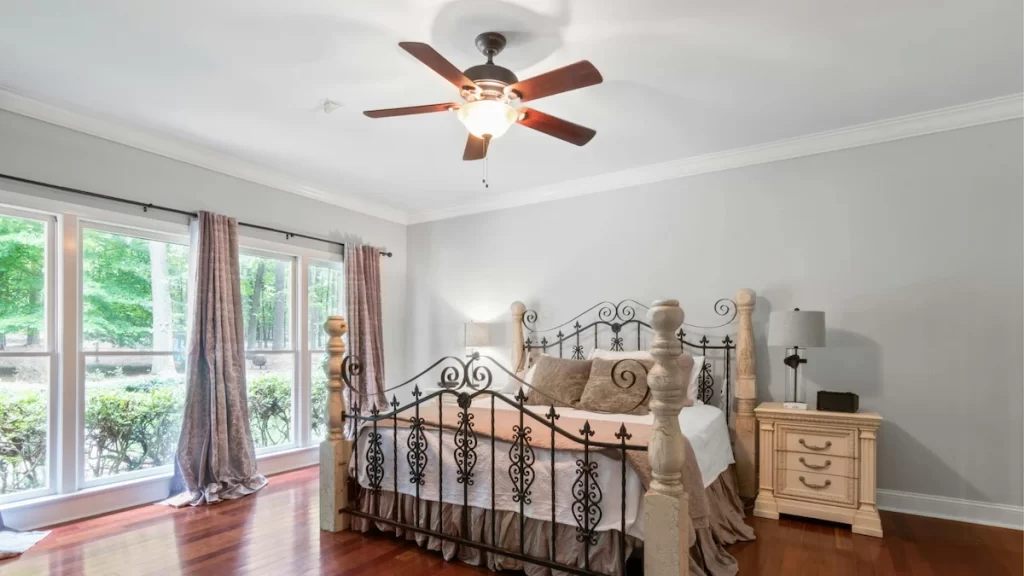


 Don Vandervort writes or edits every article at HomeTips. Don has:
Don Vandervort writes or edits every article at HomeTips. Don has:
